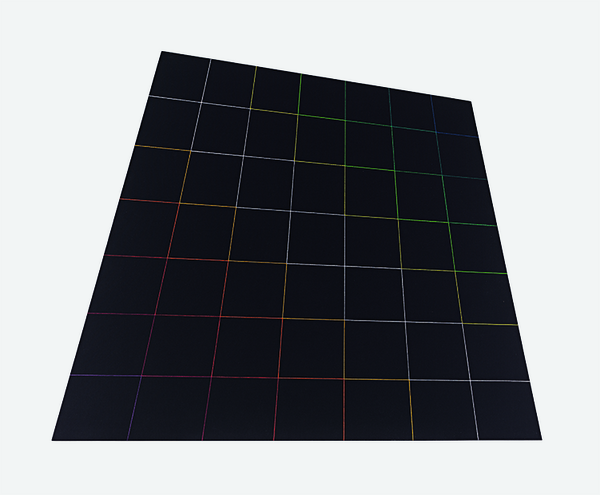Hans Jörg Glattfelder
Lineare Variation III A, 1991
[Linear Variation III A]
Acrylic on canvas
175 x 175 cm
© Artist
Photo: Olaf Nagel
The Swiss artist Hans Jörg Glattfelder is one of the foremost contemporary representatives of constructive-concrete art, and simultaneously one of its most important innovators. His work is in the tradition of the Zurich Concretists, with whom he shares his experimental approach and the demand that art should be a visual expression of mental processes. Glattfelder’s chief aim is to clarify the relationship between surface and space. Whereas the Zurich Concretists created works based on numerical sequences and the division of planes, and thus remained bound to Euclidean geometry, Glattfelder has occupied himself with non-Euclidean geometry and the curvature of space to arrive at his own system. In his art, he parts with the rule of the right angle and the concept of space as a formation extending linearly to infinity in favour of a multi-dimensional space. Since the 1970s, his inquiries into curved space have led to a series of works which Glattfelder refers to as “non-Euclidean metaphors”.
Lineare Variation III A [Linear Variation III A] from 1991 shows a black, seemingly irregular square which has however been constructed with mathematical precision, for it corresponds to a segment from a saddle surface. The picture surface is criss-crossed with a network of converging lines in different hues, which follow the sequence of the colour wheel, albeit in reverse direction. While in the lighter areas the net seems to loom out from the picture ground, it gives the visual impression of receding in the dark areas. This conveys an appearance of depth which, together with the perspectival distortion of the net and the irregular picture format, evokes the illusion of a hyperbolic curved surface. Using the classic means of a two-dimensional picture structure, Glattfelder manages the leap into the space-time continuum and with that gives the notion of illusionism a new dimension, because he provides a vivid if metaphorical illustration of something that eludes visualisation: the curvature of space demonstrated by Albert Einstein. With that Glattfelder poses a challenge to the viewers’ perceptions, and prompts them to think about how they see and above all how they regard art. (Camilla Bonath-Völkel)
Hans Jörg Glattfelder
1939 born in Zurich
Lives and works in Basel


